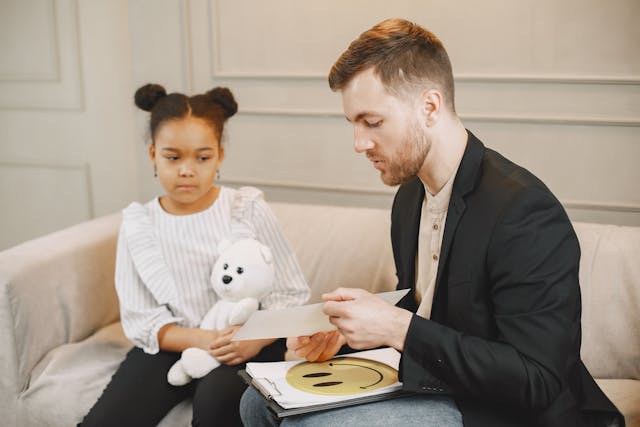Group therapy: An overview
Mental health group therapy is a great way to connect with clients and help them overcome their mental health challenges. Group therapy can be used for a variety of issues, such as grief, addiction, substance abuse, depression, anxiety, and more. They're typically organized in groups of 5 to 15 participants and often involve weekly sessions with activities and discussions to foster connections and shared experiences. Virtual group therapy sessions may also be created to support those who live rurally or outside of areas that provide in-person support.
However, choosing and planning counseling therapy activities in a group setting that promote engagement, communication, and fun can sometimes be challenging. But do not fret; we've got you covered! Through this guide, we've curated some group therapy activities that you can incorporate for more substantial clinical outcomes in a group therapy session.
Who is group therapy most suitable for?
While anyone is welcome to attend group therapy sessions, they are helpful for people who may not have access to support groups or are not particularly acclimatized to social settings. Group therapy brings individuals facing similar mental health issues together to alleviate stress, reduce pain, work through trauma, embark on self-reflection, and increase emotional regulation and stability.
Group therapy works for individuals who are struggling in their lives, like with post-traumatic stress disorder. Group therapy creates a safe space for them to connect with other members and work towards better mental health outcomes and recovery.
Additionally, group therapy is great for those who may not have access to mental healthcare, such as those who live in rural areas or have a low income. Many rural areas suffer from understaffed mental health centers and a lack of funding, which contributes to minimized access. Group therapy is a great way to overcome these barriers and ensure that all clients can access the right mental health solutions and go through the healing process.
Four group therapy activities for adults
Incorporating fun group therapy activities that actively engage and promote client communication can be difficult. Thus, consider the following group therapy activity ideas for adults:
Sharing fears
Group therapy is about building trust among clients, which can be particularly difficult, especially in a room with strangers. Group therapy prompts participants to be vulnerable and honest about some troubling subjects, so incorporating this activity is a great way to formulate bonds and develop trust. All you need is a bucket or any other object that can be used to collect responses, as well as strips of paper and pens.
Instruct your group to write one thing they are afraid of on their piece of paper. You could change this to something they are anxious about or a secret they haven't told many people. We recommend that even though the session isn't about you per se, you should still contribute to help form greater cohesiveness. Ensure that all responses are anonymous and that group members fold their pieces of paper and put them in the bucket when finished.
Mix the papers around and then redistribute them to group members. Each participant will read their response out loud and, before moving on to the next person, spend some time reflecting on the content of the message. Ask the group how they feel hearing the message, whether anyone can relate, and ask others reflective questions. The important thing is that group members connect and spark interesting discussions.
Goal identification
Goal identification allows members to keep track of their mental health journey and encourages improvement. It can also facilitate more optimistic outlooks when envisioning the future. All you need to carry out this activity is a pen and paper. Each member should be able to identify their short-term, mid-term, and long-term goals. You may utilize the Goal Setting Worksheet provided by Carepatron. Allow your participants some time to reflect and work on their goals, and once the time is up, ask each member to share them with the group.
Bond establishment
This group therapy activity is perfect for newly formed groups where members may not have connected yet. Incorporating this activity is a great way to develop support networks and formulate bonds, preventing feelings of isolation. All you need is paper and pens.
Divide your group into pairs and set a timer for 5 minutes. Inform your group that the aim is to find similarities within the pairings and that each member should talk to their partner to discover what they have in common. Once completed, they should write down at least one of these and move on to another group member.
Once the timer is complete, gather all your group members and start a discussion concerning the challenges some group members may have faced, what they learned, and how they felt about the activity. The similarities can be as simple as the same hair color or as complex as their reasons for attending group therapy.
Self-compassion pause
Self-compassion activities encourage group members to be supportive, treat people with kindness and empathy, and better understand what others may be facing. This vital group therapy activity allows for more meaningful relationships and group discussions.
One way to complete this activity is to divide a whiteboard or piece of paper into two sections: "What I say to myself" and "What I would say to a friend." Ask a willing group member to share a recent challenge or struggle they faced. This can be simple or complex, such as an argument with a friend or a plate they broke. Instruct the members to share what they were thinking at the time and with other group members. Ask your group what they would say to a friend in the same situation.
Alternatively, you can use the Self-Compassion Worksheet from Carepatron to allow your clients to complete and share with the group members.
Why group therapy activities work
Group therapy activities work because they offer a supportive environment a mental health professional facilitates. Trauma survivors benefit from sharing experiences, easing emotional distress. Engaging in group activities fosters healthy relationships and personal growth, aiding recovery. Here's how it can help clients:
It provides support
Group therapy is an excellent way for trauma survivors to receive support from others facing similar challenges. Many clients benefit from sharing their trauma narrative in a safe, non-judgmental environment. This fosters positive emotions and encourages the exchange of positive affirmations, forming supportive networks to improve mental well-being.
It offers a sounding board
Group therapy activities, particularly for trauma survivors, provide a vital platform for sharing traumatic experiences. Participants can unload negative feelings and insecurities through eye contact and shared narratives. This supportive environment allows individuals to feel heard and understood, fostering healing without necessarily giving advice.
It pushes clients forward
For some, group activities are incredibly daunting, and they might feel uncomfortable. However, group therapy is sometimes a necessary choice. It can bring clients out of their comfort zone and help them encounter valuable insights that can change their lives during a group session, especially in activities that encourage them to become a group leader. Group therapy is often the next step for many clients in building support networks and reinstalling hope within their mental health journey.
It improves social skills
Group therapy involves group discussions. It fosters emotional health by nurturing healthy social skills in clients. In the aftermath of a traumatic event, individuals often grapple with low self-esteem, finding solace and growth in group settings. Unlike individual therapy, group sessions offer opportunities to learn from peers, understand social dynamics, and cultivate supportive relationships, propelling clients forward in their healing journey.
It teaches clients something about themselves
One of group therapy's most important aspects is promoting self-discovery. Through activities, clients can gain insights into their tendencies, anxieties, and emotions on a deeper level. They learn coping strategies and new skills and connect with others in a fun way, experiencing physical sensations that propel them forward in their healing journey.
Conclusion
Group therapy can be challenging to initiate. Various factors go into engagement and communication, and it can sometimes be hard to encourage members to form bonds with others with whom they have no connection outside of the session. However, with some exciting and motivational group therapy activities, you can facilitate and foster strong connections within the group and in ways that encourage lasting support networks that can withstand different social settings. Group activities can be fun and produce exciting insights that can elevate mental health outcomes for every one of your clients.

.webp)






.jpg)


.jpg)




.jpg)


.jpg)
.jpg)


.jpg)
.jpg)


.jpg)
